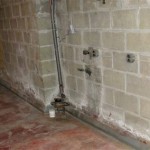How to Drain Water from a Flooded Basement
A flooded basement can be a significant source of stress and damage. It can lead to structural issues, mold growth, and the loss of valuable possessions. Fortunately, there are several effective methods for draining the water and mitigating the damage. This article will guide you through the steps to effectively remove water from your flooded basement, outlining the necessary precautions and equipment.
Assess the Situation and Safety Precautions
The first step is to assess the severity of the flood and ensure your safety before attempting any drainage.
-
Turn off the electricity:
To prevent electrocution, immediately disconnect the power supply to your basement. -
Check for gas leaks:
If you suspect a natural gas leak, evacuate the area and call your utility company. -
Wear appropriate safety gear:
Waterproof boots, gloves, and a mask or respirator can protect you from contaminated water and potential hazards. -
Do not enter deep water:
If the water level is too high, do not attempt to enter the basement. Contact a professional for assistance.
Methods for Draining the Water
Several methods can be used to remove water from a flooded basement, each suited to different situations.
1. Using a Submersible Pump
A submersible pump is the most efficient and effective way to remove large volumes of water. It is designed to operate underwater and can pump water out of the basement and into a drain or other designated location.
-
Choose the right size:
Select a pump with a capacity that matches the volume of water you need to remove. Consider the flow rate (gallons per minute or liters per minute) and the lift height (the vertical distance the water needs to be pumped). -
Set it up correctly:
Place the pump at the lowest point in the basement, ensure the discharge hose is properly connected, and position it to direct the water away from the foundation. -
Monitor the water level:
Check the pump regularly and ensure it is working efficiently to remove the water.
2. Utilizing a Wet/Dry Vacuum
A wet/dry vacuum cleaner can be used to remove smaller amounts of water and debris. It is particularly helpful for cleaning up leftover water and removing standing water in areas where a pump cannot reach.
-
Choose a powerful vacuum:
Select a wet/dry vacuum with a large capacity and a strong suction power. -
Empty the vacuum regularly:
Ensure the tank is emptied frequently to avoid overloading and ensure proper suction. -
Use appropriate filters:
Change the filters regularly, especially when dealing with contaminated water, to maintain efficiency and prevent damage to the vacuum.
3. Employing Gravity and Drainage
If the water level is relatively low, you can use gravity and drainage to remove it naturally.
-
Create a path for drainage:
If possible, direct the water towards a floor drain or a storm drain outside the basement. You may need to use hoses and temporary channels to facilitate the drainage. -
Position the basement door:
Open the basement door to allow the water to flow out, if possible. Be cautious if the water level is high or if there is a risk of flooding the surrounding areas. -
Use absorbent materials:
Place absorbent materials such as towels, rags, or sponges to help soak up excess water and reduce the time it takes to dry.
Additional Tips for Effective Water Removal
To maximize the efficiency and effectiveness of water removal, consider these additional tips:
-
Ventilate the basement:
Open windows and doors to improve air circulation and hasten the drying process. -
Remove belongings:
Move any valuable items or belongings to higher ground or a safe location. -
Clean and disinfect:
Once the water is removed, clean and disinfect the basement thoroughly to prevent mold and mildew growth. -
Call a professional:
If the flooding is severe or if you are unsure about the drainage process, contact a professional water damage restoration company.
By following these steps and incorporating the necessary precautions, you can effectively drain water from your flooded basement and minimize the potential damage. It is important to remember that prompt action is crucial to prevent further complications and reduce the risk of long-term problems.

3 Step Clean Up Plan After Your Basement Floods Waterproof Com

How To Clean A Flooded Basement Reviews By Wirecutter

Top Methods For Basement Water Removal

Flooded Basement Cleanup Water Removal Sudbury Wayland Weston Concord Ma Nh Youtube

How To Clean A Flooded Basement News And Events For Systems Inc

How To Remove Water From Your Basement Without A Sump Pump

How To Prevent Basement Flooding Complete Strategy

6 Simple Ways To Prevent Basement Flooding American Dry

Flooded Basement Cleaning Rapid Water Extraction Drying Service

Causes Of Basement Flooding Utilities Kingston
Related Posts







